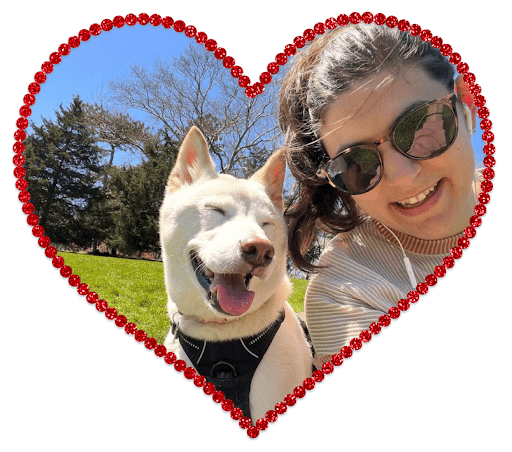
Meet Simba, my 10-year-old Shiba Inu rescue dog, or as close friends, family and even coworkers would agree, my adopted offspring. So many of my purchase decisions revolve around Simba’s wants (cheese) and needs (flea/tick prevention meds), but when I really lean into the spirit of pampering, it’s during the holidays.
And, I’m not alone. In today’s pet-loving world, more and more people consider their furry companions as part of the family. In fact, 70% of people typically buy their pets gifts (of those, more than a quarter spend more than $100) and for every $3 that parents spend on costumes for children, they’ll spend $1 on a costume for their pet.
Valentine’s Day is a key moment for pet owners to express their adoration for those who bring the most joy and companionship to their lives. In 2024, Valentine’s Day spending on pet gifts is expected to fall in line with that spent on children’s classmates & teachers, highlighting the growing normalization of incorporating furry friends into human celebrations.
While Valentine’s Day serves as a compelling example of the power of personalized messaging for pet care brands, it is just one occasion among many throughout the year. From birthdays and holidays to milestones and everyday moments, there are numerous opportunities for brands to connect with pet owners on a deeper level by customizing messaging to Aki’s Pet Parent Personas.
How to Engage Different Pet Personas
Brands that show a genuine interest in meeting their customers’ individual requirements can evoke a stronger emotional connection between pet parents and the brand itself. One way for petcare companies to ‘foster’ brand loyalty through the lens of holidays and occasions is by personalizing messaging that speaks to each pet persona’s specific concerns and desires. This includes:
- Celebrationists: Seasonal holiday pet-owning celebrators include their pets in festivities by dressing them up in themed costumes, providing them with special toys, and indulging them with an increased number of treats. Key celebrations for this persona include all major holidays (i.e. Valentine’s Day treats, Halloween costumes), winter holidays (gifting treats/toys), and birthdays.
- Puppy/Kitten Trainers: Owners of pets younger than 12 months are focused on proper nutrition and training to establish long-term behaviors and routines. Since these young pets are still being vaccinated or potty trained, most interactions occur indoors, presenting opportunities to feature the home as the backdrop for all their “first-time” milestones and holidays like Father’s/Mother’s Day.
- Everyday Paw-rents: These owners have pets over 12 months old and predominantly purchase adult pet food. Dog owners balance responsibilities around 2-3 outdoor walks per day, considering their pets’ social and exercise requirements. Meanwhile, cat owners primarily bond with their pets over mealtimes and engage in occasional play. For this cohort, celebration messaging around major holidays and birthdays can be made more personal by spotlighting universal yet still unique pet quirks, like favorite toy behaviors, relaxation rituals, and sloppy eating/drinking habits.
- Graceful Agers: Owners of senior pets (over 7 years old) prioritize adjusting to their mature pet’s needs. They focus on minimizing stress and change within the household, ensuring regular exercise to offset weight gain, and transitioning to calorie-dense nutritional diets. Messaging for this segment should focus on the joy of simply being together, and the journey that pets and owners have been through that precedes each new marked occasion for celebration.
Pet care, nutrition, and supply brands have a unique opportunity to leverage pet parents’ natural instinct to love on their pets during key holidays and celebrations. This year, consider ‘adopting’ a new messaging strategy that taps into this mindset by engaging pet parents in the lead up to different occasions during everyday moments of togetherness like weekend downtime, after-dinner bonding sessions, and other memorable pet “moments”.
Download this case study to learn how Purina reached dog and cat food shoppers to bolster awareness and sales.
Rachel Gropper, Sr. Manager of Market Insights & Strategy
